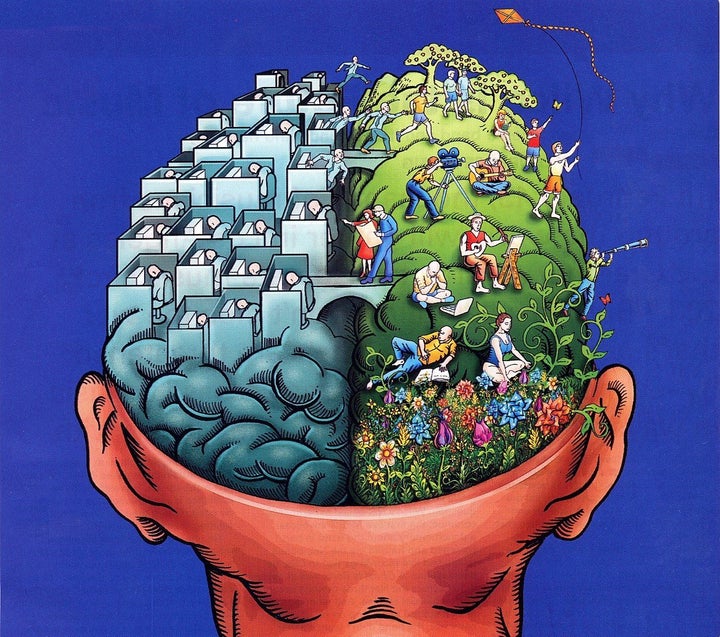
Creative Commons
When most people think of a hijacking, they often picture a person wearing a mask and waving a gun, who takes control of a plane, train or automobile. And although a person can hijack a car for a variety of reasons, it mostly boils down to needing to escape. In this regard, hijacking is a means to an end; innocent victims are ripped from their normal lives by the violent intrusion, wants and goals of the hijacker.
The word “addiction” is derived from a Latin term for “enslaved by” or “bound to.” Anyone who has struggled (or known someone else who has) with an addiction can understand why. Addiction is a persistent, compulsive dependence on a habit or substance. Many experts categorize addiction into two main types of addictions: substance addictions (for example, alcoholism, drug abuse, and smoking); and process addictions (for example, gambling, spending, shopping, eating, and sexual activity). However a third type, Social networking addiction, has been spreading like wildfire in recent years and with no end in sight. Used to refer to someone spending too much time using Facebook, Twitter, Instagram and other forms of social media, social networking addiction has yet to achieve any official medical recognition as a disease or disorder but it’s undeniably real and here to stay.
Dopamine is a neurochemical that helps control the brain's reward and pleasure centers. Crucial for learning adaptive behaviors dopamine enables us not only to see rewards, but to take action to move toward them. In the “hijacked” view of addiction, the brain is the innocent victim of certain substances — alcohol, cocaine, nicotine or heroin, for example — as well as certain behaviors like smartphone usage, gambling or sexual activity. The drugs or the dopamine produced by the behaviors overpower and redirect the brain’s normal responses, and thus take control of (hijack) it. For addicted people, that martini or cigarette or latest Instagram selfie is the weapon-wielding hijacker who is going to coerce certain behaviors.
To do this, drugs like alcohol and cocaine and behaviors like gambling light up the brain’s pleasure circuitry, often bringing a burst of euphoria (or in the case of smartphone usage, a kind of social dystopia). We tend to want to maximize pleasure; we tend to do things that bring more of it. We also tend to chase it when it subsides, hoping to recreate the same level of pleasure we have experienced in the past. It is not uncommon to hear addicts talking about wanting to experience the euphoria of a first high. Often they never reach it, but keep trying. All of this lends credence to the metaphor of the brain being hijacked.
The brain registers all pleasures in the same way, whether they originate with drugs, money, sex or even strangers “liking” a Facebook post. When activated, these substances and habits release a tidal wave of dopamine in the brain’s nucleus accumbens, which is a large region of the brain’s pleasure center. The likelihood that the use of a drug or participation in any reoccurring rewarding activity will lead to addiction is directly linked to three factors: speed, intensity and reliability of the dopamine release. Even taking the same drug through different methods of administration can influence how likely it is to lead to addiction. Smoking a drug or injecting it intravenously, as opposed to swallowing it as a pill, for example, generally produces a faster, stronger dopamine signal and is more likely to lead to drug misuse.
Scientists once believed that the experience of pleasure alone was enough to prompt people to continue seeking an addictive substance or activity. But more recent research suggests that the situation is more complicated. Dopamine not only contributes to the experience of pleasure, but also plays a role in learning and memory — two key elements in the transition from liking something to becoming addicted to it. According to the current theory about addiction, dopamine interacts with another neurotransmitter, glutamate, to take over the brain’s system of reward-related learning. This system has an important role in sustaining life because it links activities needed for human survival (such as eating and sex) with pleasure and reward. The reward circuit in the brain includes areas involved with motivation and memory as well as with pleasure. Addictive substances and behaviors stimulate the same circuit — and then overload it.
Social Networking Addiction arguably relies more on our compulsive behavior. Often feelings of boredom, frustration and loneliness can translate into a prompt and often mindless action to quell the negative sensation of not feeling loved or good about ourselves. The impulse to constantly check our message notifications, for example, exemplifies the deeper psychological need to feel liked. These constant check-ins can lead to falling into the rabbit hole of varied social media offerings, whether it be You Tube videos or Facebook live feeds. Never before has our readiness to voluntarily forsake our own dopamine levels to be hijacked become so commodified.
In nature, rewards are often delivered only with time and effort. Addictive drugs and behaviors provide a shortcut, flooding the brain with dopamine and other neurochemicals. Our brains do not have an easy way to withstand the allure and cause of pleasure, no matter how short-term that pleasure lasts or the long-term damage many of these pleasures may cause over time. Addictive drugs, for example, can release two to 10 times the amount of dopamine that natural rewards do, and they do it more quickly and more reliably. In a person who becomes addicted, brain receptors become overwhelmed. The brain responds by producing less dopamine or eliminating dopamine receptors — an adaptation similar to turning the volume down on a loudspeaker when noise becomes too loud. As a result of these adaptations, people build up a tolerance to such habits and drugs and the dopamine produced has less impact on the brain’s reward center. As a result, they have to take more of the drug or engage in the habits producing dopamine more in order to obtain the same dopamine “high.” Addiction ensues and those who fall addicted become essentially hijacked by the drug or habit controlling them through their dopamine level; that is, addiction falls in line with the brain's expectations.
